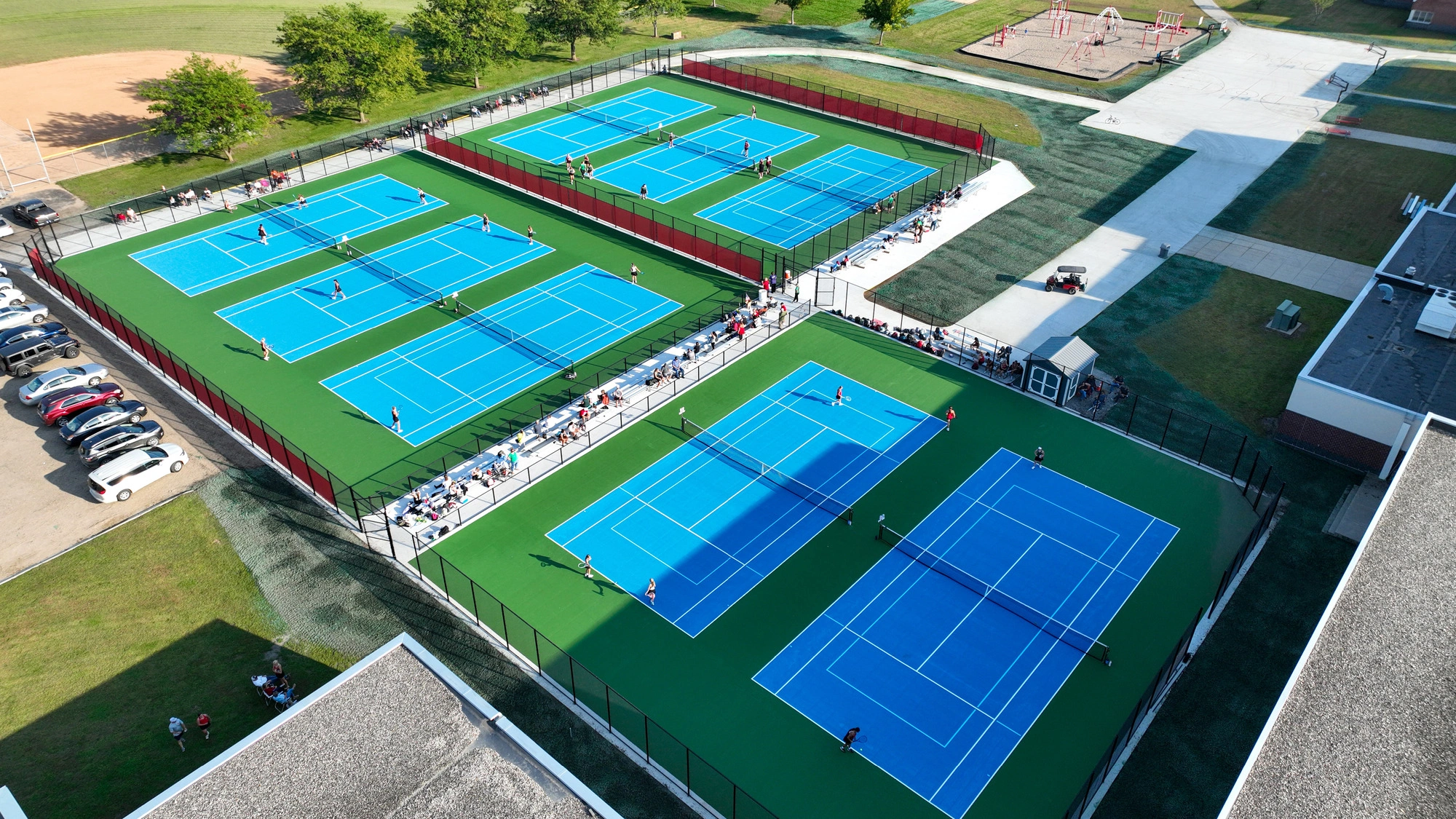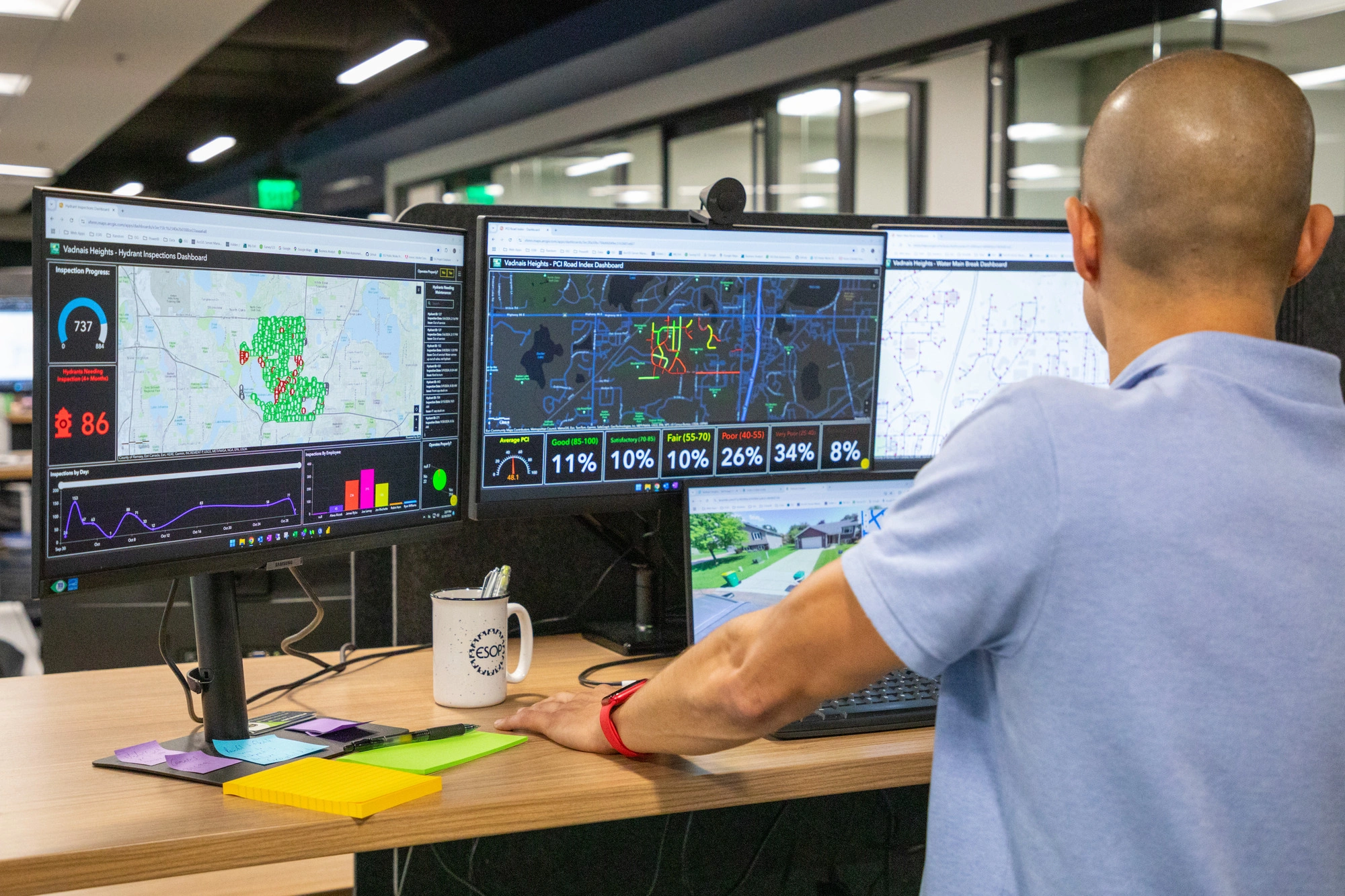Workplace Design Strategies
Supporting Organizational Goals + Improving Employee Wellbeing
The workplace as we know it is in a state of transition. With the greater acceptance of working from home and the need to support proactive team engagement, ISG has seen this redefinition of the workplace and its purpose within an organization evolving rapidly over the last few years. From interior environments and technology integration to architecture and engineering, ISG’s design teams are always seeking out the latest workplace design strategies that offer alternatives to meet client needs while also extending beyond their original visions.
With nearly five decades of experience and lessons learned in designing workplace environments across the Midwest, ISG has found that the following focus points are key in developing a customized workplace that employees are eager for, productive in, and proud of. The following considerations are also great tools for retaining and recruiting employees in the modern job market.
Design to Promote Culture, Collaboration, and Creativity
More than ever, employees are seeking out workplaces with a defined culture that promotes collaboration and creativity.
- Culture
The strength of an organization is a result of their culture, which is highly influenced by people, their perspectives, and their approach to work. This is represented in how a team presents their organization to external clients, as well as internally, and how teams interact with each other. - Collaboration
At the core of problem solving and innovation is strong collaboration. Creating an environment that encourages interaction and connections, whether planned or unintentional, allows for greater comradery, transfer of knowledge, and success in the workplace. - Creativity
Creativity can be sparked in many ways. It can be influenced by experience, environment, and other tangible or intangible influences.
Understanding each organization’s personality in regard to their culture, collaboration, and creativity is key to developing environments that support their values and mission and to empowering employees to reach their greatest potential.
Ensure Every Space is Intentional + Tailored
Every space in the workplace must be purposefully designed to meet the client’s goals. A one-size-fits-all approach is not effective for ensuring optimal productivity and engagement for each employee and team. The following are all important factors to consider and tailor to meet a company’s cultural, collaborative, and creative needs:
- Collaboration Spaces
Collaborative spaces are a high priority in most workplaces and should accommodate technology, discussion, and movement. Acoustics and location within the overall workplace should be carefully considered. Location of collaborative spaces should be carefully chosen to encourage use, but not cause distractions to adjacent quite work zones. - Technology for an Inclusive Work Experience
Technology is becoming even more important in ensuring an inclusive work experience. Through devices and software installations, a workplace can allow equal connectivity and participation to those working both in and out of the office. A seamless virtual environment goes beyond cameras and audio capabilities to include integration of digital tools that streamline teamwork. - Branding
Customizing each space to reflect the client’s values and mission establishes a sense of identity, trust, and belonging for employees. It also helps communicate and enhance a company’s image and brand awareness externally. Colors, messaging, materials, furniture, and other fixtures are all important considerations that help a client reach their highest potential with branding. - Equipment
From printers to break room appliances, every office has unique needs for office equipment. A holistic design approach must tailor to and plan for any necessary office device or feature, including installation, access, and purpose. - Balance Function with Aesthetics
Throughout the design process, maintaining balance between functional needs and aesthetic goals is important in ensuring each space is efficient and appeals to employees, recruits, and customers.
Amenities That Improve Wellbeing
Workplaces are no longer solely a place where people get work done in a solo environment. Pulling meetings from private offices into dedicated collaborative spaces, modern workplace design places higher emphasis on connectivity, transparency, and interactive engagement. Greater emphasis on healthy behaviors is also a priority, with design influences reaching beyond including light and wellness opportunities to encourage movement, increase productive energy, and ensure adequate space to interact with others or focus on solo work. The following amenities are important to consider in designing a productive work environment:
- Diverse Spaces
Creating diverse spaces where people can recharge with amenities that cultivate productivity is an important part of the employee experience. From working cafes and fitness centers to outdoor seating areas with green space, these features equip employees with the ability to put their best professional foot forward each day. - Fixtures + Furnishing
Fixtures and furnishings, such as seating options and a variety of workspace types, impact the employee experience by helping to minimize stress and boost productivity. Selecting features that will best accommodate users requires a clear understanding of the type of work that takes place.
As the workplace evolves, ISG is leveraging the above design goals and strategies to create unique and modern experiences that enhance a company’s image and brand while reinforcing their mission. Simultaneously, ISG’s tailored approach to workplace design allows us to bolster clients’ organizational goals including productivity, recruitment, and retention.
Authors
Jeremy Wiesen, AIA, NCARB, LEED AP
Architecture Practice Group Leader
MaTrasa Maae, IIDA
Interior Designer





.webp)


Related Articles


The Future of Southern Minnesota Lakes Conference Returns To Inspire Action on Lake Planning, Preservation, and Restoration
ISG is bringing back The Future of Southern Minnesota Lakes Conference for its fourth year from March 6–7, 2026 creating space for lake association members, environmental professionals, and community leaders dedicated to preserving and restoring Southern Minnesota lakes.

.webp)
ISG Recognized as a 2025–26 Emerging Professional Friendly Firm for the Fourth Consecutive Cycle
ISG has been honored as a 2025–26 Emerging Professional Friendly Firm by AIA chapters in North Dakota, South Dakota, Wisconsin, and Minnesota in recognition of its commitment to fair compensation, licensure support, mentorship, and growth for early-career architects.




_webfull.webp)
.webp)





